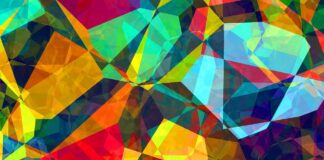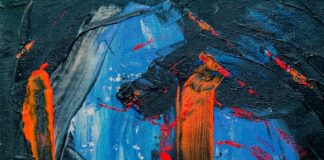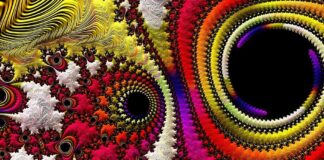Iteration: The Essence of Progress and Refinement
In the realm of creativity, problem-solving, and innovation, iteration stands as an indomitable force driving progress and fostering refinement. It’s a concept deeply woven into the fabric of human endeavor, from the grandest architectural feats to the tiniest lines of code. Iteration embodies the spirit of continuous improvement, offering a dynamic and cyclic process that empowers us to evolve, adapt, and achieve excellence. At its core, iteration represents the willingness to revisit, revise, and re-envision our work, ultimately leading to heightened outcomes and an unceasing march towards perfection.
Iteration is more than just a method; it’s a philosophy that transcends disciplines and resonates across industries. From the moment an idea is conceived, to its implementation and subsequent evolution, iteration guides the journey. It is the compass that leads creators and innovators along the path of enhancement. At its simplest, iteration involves the act of repeating a process with the intent to achieve a better result. This reimagining of the same concept, with refinements based on previous attempts, is the cornerstone of iterative progress.
Consider the process of sculpting a masterpiece from a raw block of marble. A sculptor doesn’t chisel away without a plan; instead, they sculpt, assess, adjust, and repeat. With each iteration, the form becomes more defined, the contours more graceful, and the essence of the artist’s vision more pronounced. Similarly, in the realm of software development, iteration takes the form of continuous testing, debugging, and feature enhancement. Programmers write code, identify flaws, address issues, and rewrite sections to optimize performance and functionality. In both cases, iteration embodies the spirit of refinement through repetition.
The iterative process acknowledges the inevitability of imperfection in initial attempts. It grants creators the permission to explore and experiment, knowing that each iteration brings them one step closer to the desired outcome. The history of human achievement is a testament to the power of iteration. The towering achievements of architecture, such as the intricate construction of the Notre-Dame Cathedral, were not accomplished in a single swift stroke. Instead, they emerged through a series of iterations, incorporating lessons learned from each phase to achieve greater heights of magnificence.
The iterative approach is not limited to tangible creations; it finds equal resonance in the realm of intellectual endeavors. The process of scientific inquiry itself is a quintessential iteration. Scientists propose hypotheses, conduct experiments, analyze results, and refine hypotheses based on findings. Each iteration of this process refines our understanding of the natural world, leading to breakthroughs that shape our society. Just as a scientist evolves their hypotheses, a writer iterates over drafts, refining their ideas and enhancing their prose with each cycle.
While iteration may seem synonymous with repetition, it’s far from monotonous. Instead, it’s an intricately nuanced dance between continuity and transformation. It involves the deliberate act of building upon what already exists, enhancing it, and allowing it to metamorphose into something even more remarkable. In the world of technology, this dance is embodied in the Agile methodology, where software development occurs through incremental iterations, each resulting in a potentially shippable product. This approach encourages adaptability, collaboration, and continuous feedback, embracing change as an essential part of the process.
One of the most compelling aspects of iteration is its ability to foster innovation. The iterative mindset encourages creators to push boundaries, explore the uncharted, and dare to tread where others have not. It embodies the ethos of experimentation, where failures are not setbacks but rather stepping stones toward success. Innovators like Thomas Edison epitomized this mindset, famously stating, “I have not failed. I’ve just found 10,000 ways that won’t work.” Edison’s relentless iterations in pursuit of the electric light bulb revolutionized the world and left an indelible mark on the course of history.
In the digital age, iteration is more vital than ever. Technology’s rapid evolution demands continuous adaptation and improvement. The realm of user experience (UX) design, for instance, is grounded in iteration. Designers create prototypes, test them with users, gather feedback, and refine their designs iteratively. This process ensures that the final product aligns with user needs, resulting in seamless and intuitive digital experiences. The iterative approach is not limited to the tech industry; it finds relevance in disciplines ranging from fashion to education, where constant reevaluation and enhancement are key to staying relevant.
Iteration doesn’t solely focus on the betterment of products; it also nurtures personal growth and development. The journey to mastery in any field is marked by cycles of deliberate practice and refinement. Musicians repeat scales, athletes drill fundamental movements, and artists replicate strokes – all with the intention of honing their skills. This approach acknowledges that expertise is not instantaneously attained but rather the outcome of countless iterations aimed at pushing the boundaries of proficiency.
As iteration finds its place in every facet of human endeavor, it reminds us that the path to greatness is rarely linear. It’s a journey that spirals, evolves, and occasionally doubles back, but with each loop, it ascends to new heights. The history of the great symphonies, the scientific breakthroughs, the monumental artworks, and the technological advancements is, in essence, a chronicle of iterations – of successive attempts and persistent improvements.
In conclusion, iteration stands as a foundational concept underlying progress and refinement. It’s the heartbeat of innovation, a testament to human resilience, and a guide on the journey toward excellence. From the artistic realm to the technological landscape, from personal growth to societal development, iteration shapes the narrative of human achievement. As we embrace iteration’s cyclic nature, we embrace the power to continuously reshape the world and ourselves, propelling us forward in our pursuit of perfection.
Iteration: An Unceasing Evolution of Creation and Progress
Iteration, the rhythmic pulse of development and the cadence of advancement, weaves its intricate pattern through every facet of human ingenuity. This perpetual loop of reimagining, refining, and reinventing propels us toward greater heights, shaping our achievements and aspirations. Like a river’s current, iteration flows through the landscapes of creation, molding the contours of our endeavors with each successive wave.
This cyclic process, although often associated with technological innovation, is not bound by the realm of code and algorithms. It is the artisan’s chisel on marble, carving away imperfections to reveal the masterpiece within. It is the writer’s pen scratching out words to pave the way for a more eloquent expression. It’s the scientist’s repeated experimentation, each trial a brushstroke on the canvas of discovery. Iteration is an intrinsic human drive—a dance between the known and the unknown, the familiar and the novel.
The roots of iteration delve deep into history, shaping the legacy of renowned thinkers and creators. Ancient architects iterated through different designs, experimenting with various materials and structures before raising awe-inspiring monuments that continue to inspire awe today. Visionaries like Leonardo da Vinci, with his countless sketches and drafts, epitomized iteration’s persistent quest for perfection. Centuries later, this spirit lives on as modern architects, engineers, and artists iterate through iterations upon iterations, sculpting designs that blend beauty with functionality.
In literature, the symphony of iteration unfolds as writers labor over manuscripts, letting words flow, pausing, and returning with fresh eyes to refine their narrative symphony. The poet’s verses undergo a symphony of syllables, the playwright’s scenes a choreography of dialogues, all evolving through successive renditions. Even as ink meets paper, the writer dances with iteration, weaving tales that resonate deeply, each draft an evolution of thought.
Iteration, though frequently associated with deliberate, calculated movements, also harbors an element of spontaneity. It is the jazz musician’s improvisation, the artist’s sudden deviation from the plan, the inventor’s “Eureka!” moment that sparks a revolutionary twist. It captures the essence of human intuition, allowing creators to harness the unexpected and channel it into their work. This interplay between structure and intuition underpins the uniqueness of each iteration and underscores the dynamic nature of progress.
In the realm of scientific inquiry, iteration takes on the role of a tireless seeker of truth. The scientist, ever curious, develops hypotheses, conducts experiments, and meticulously analyzes results. Each iteration refines the hypothesis, inching closer to a more accurate representation of reality. This scientific dance with iteration fuels the engine of knowledge, propelling us toward deeper insights and more profound understanding of the natural world.
At its core, iteration is an invitation to embrace failure not as defeat, but as an integral part of the journey. It’s the playground of trial and error, where lessons from missteps are the stepping stones to success. Every prototype that falters, every brushstroke that misaligns, every chord that falters—all are threads in the rich tapestry of iteration. Thomas Edison, the master of iteration, once said, “I have not failed. I’ve just found 10,000 ways that won’t work.” This resilience in the face of setbacks is the heartbeat of iteration.
Beyond the realm of physical creations, iteration reshapes the landscape of personal development. The individual journey mirrors the iterative process, with each experience, challenge, and lesson contributing to the ongoing refinement of character. Just as a sculpture is honed from raw stone, so too is a person molded by their life’s experiences. Through setbacks and successes, the self is iterated upon, gradually emerging as a more refined version.
Iteration is not confined to monumental achievements; it flourishes in the subtleties of everyday life. Consider the act of cooking, a constant experiment with ingredients and flavors. Each culinary endeavor is an iteration—an attempt to perfect taste and texture. Similarly, relationships evolve through countless iterations, as interactions, conversations, and shared experiences shape the dynamic between individuals.
In this dance with iteration, the concept of “perfection” remains elusive—a distant horizon that retreats as we approach. Iteration’s true magic lies in the journey itself, not the destination. It challenges us to transcend complacency, to push beyond our comfort zones, and to stretch the boundaries of our creativity. The art of iteration is, after all, an art of perpetual exploration, an eternal voyage towards potential.
In conclusion, iteration is an ever-present force that propels human endeavor forward. From the grandest architectural marvels to the finest strokes of art, from scientific exploration to the nuanced choreography of daily life, iteration orchestrates the symphony of progress. It’s a reminder that greatness is not born overnight; it’s a product of iterative evolution, of continuous shaping and reshaping. Iteration beckons us to embrace the journey, to dance with failure, and to harmonize with the rhythm of creativity, for it is in this dance that we find our truest expression and our most remarkable achievements.
Iteration: A Tapestry of Unending Transformation
In the vast canvas of human ingenuity, iteration is the thread that weaves a tapestry of unending transformation. It’s the whisper of progress that accompanies every stroke of creation, the eternal cycle of renewal that breathes life into ideas, processes, and innovations. While its significance often reverberates within the confines of technological advancements, iteration’s influence transcends the digital realm, resonating in the realms of art, exploration, and even the evolution of thought.
Picture the artist, standing before a blank canvas, poised with brushes and pigments. What unfolds is not a solitary stroke of genius but a symphony of iterations, where colors blend, shapes evolve, and perspectives shift. Every brushstroke is an exploration, each layer of paint an iteration, bringing depth and nuance to the composition. From the broad strokes that outline the foundation to the delicate details that breathe life into the scene, iteration guides the artist’s hand, turning imagination into reality.
Iteration’s song echoes in the chambers of history, narrating the tales of explorers who dared to venture beyond known horizons. The pioneers who set sail into uncharted waters or trekked across unexplored lands embarked on a journey of countless iterations. Each step and each discovery was a brushstroke on the canvas of exploration, reshaping maps and rewriting the boundaries of the known world. The iterative process of discovery extended beyond geography, touching every facet of knowledge, as philosophers, scholars, and scientists honed their theories through repeated reflection and refinement.
In the realm of human relationships, iteration plays its harmonious tune, orchestrating the evolution of bonds that connect us. Interactions with friends, family, and acquaintances transform over time through countless iterations of conversations, shared experiences, and moments of connection. The stories we share, the lessons we learn, and the changes we undergo are threads woven into the complex tapestry of relationships. Just as artistic iterations create depth, relationships deepen with every iteration, forming intricate patterns that define our lives.
Iteration’s rhythm can also be heard in the eloquent dance of language. The evolution of language itself is a testament to the power of iteration. Words, phrases, and expressions shift and morph with time, adapting to the changing nuances of culture, society, and communication. Through iterations of communication, languages mold themselves to convey subtle emotions, complex ideas, and profound truths, echoing the evolving heartbeat of humanity.
As humanity’s journey unfolds, iteration shapes the way we perceive and interact with the world around us. Consider the act of observation—a simple glance that turns into a gaze, then deepens into contemplation. This iterative process of seeing refines our perception, allowing us to unravel the intricacies of our environment and delve into hidden depths. Just as a painter might layer hues to capture the play of light, we layer our observations to construct a more nuanced understanding of reality.
While iteration often conjures images of measured steps and calculated progress, it’s also intertwined with spontaneity and unpredictability. The act of creation, whether it’s a musical composition or a culinary masterpiece, involves moments of improvisation that add a touch of magic. The jazz musician’s riff, the chef’s dash of an unexpected ingredient—these are iterations born in the heat of the moment, harmonizing with the iterative backdrop of the creative process.
In the domain of innovation, iteration is the beacon that guides technological progress. But it’s more than mere code revisions or hardware enhancements; it’s an evolutionary cycle that extends far beyond the confines of circuits and algorithms. Technological iterations are the footprints of human imagination materialized into machines, a symphony of human potential translated into bits and bytes. Yet, this is not an isolated orchestra; it’s a symphony in dialogue with the grand chorus of human creativity.
Iteration’s magic unfolds in the folds of time, reminding us that perfection is not a static destination but a dynamic journey. Like a river etching its course through the landscape, iteration shapes our individual and collective narratives. It’s the painter’s brush on canvas, the navigator’s charted course, the composer’s melody—each resonating with the essence of iterative creation. Our lives, like the most intricate artwork, are a result of countless iterations, layers upon layers of experiences, memories, and growth.
In a world that thrives on change, iteration is our compass, guiding us through the ever-shifting landscapes of existence. It invites us to embrace imperfection as a part of the process, to find beauty in the evolution of our endeavors. The iterative spirit beckons us to engage, to explore, and to refine, knowing that with each iteration, we inch closer to the sublime. It’s a reminder that the journey is as significant as the destination, that the symphony of iterations is what gives our stories depth, richness, and meaning.














